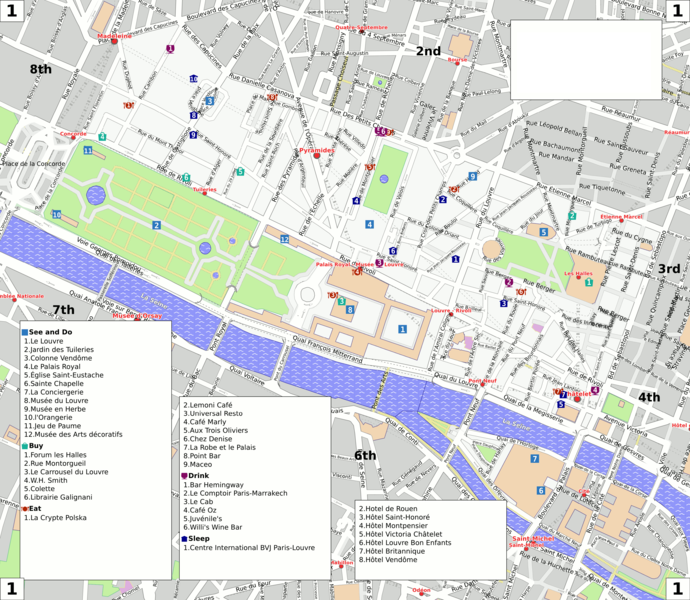Hello everyone!
How is everything going? I hope you are having a good day. I've been extremely busy lately but that is absolutely fine as far as I am concerned as I prefer to make the most of my time. I always make sure to take a walk in the mountains or visit the beach on a daily basis as it helps me get rid of anxiety and allows me to recharge my spirit. During the past days I managed to get some free time and decided to work on another Engineering blog, so here I am with another part of this Introduction to Cartography series. I don't mean to waste your time though, so let's get it started.
As promised in a previous Cartography post concerning visual variables and the fundamental elements and theoretical problems of Cartographic Symbolization, this is the fourteenth part of this Introduction to Cartography series. This time I am taking the chance to share broad information regarding the symbolization of geographical elements. We will take a look at the way Cartographers deal with symbolization regarding point data taking into consideration the map scale utilized. We will also talk about qualitative and quantitative point data and share information regarding the visual variables used in each category of point data, so stay focused!
Last but never least, I'd like to remind everyone that this is an introductory series about Cartography, which is the scientific field of creating 2D depictions of our 3D world with precision. This basically means that I will present general information in a simplified manner so that nobody gets bored to death. I believe that there's always a high chance of learning a thing or two by reading through these blogs, so stay tuned!

Introduction
There is a wide range of different sorts of spatial data utilized by Cartographers in the design and creation of various sorts of mappings nowadays. All data related with the precise definition of the location of the geographic entities depicted represents a very small part of the total volume of spatial data utilized in reality. As explained in the previous part of this series, the symbolization process is rather complicated and the availability of vast amounts of data serves as an obstacle, especially in digital environments where limitations are strict.
The art of symbolization is used in various scientific fields, however in this blog we will be focusing on the techniques used by Cartographers in order to symbolize geographical phenomena. There are three types of symbols that are broadly used in order to represent geographical data; point, linear and surface symbols. In this blog we are going to take a look at point symbols and learn how they can be used in order to depict spatial elements that can be perceived as specific points in space.
Point Elements
In many cases geographical phenomena refer to specific points in space, while there are also cases where spatial data refers to a broader area but is assumed to refer to specific points for the sake of efficiency regarding cartographic communications. There are various examples which could be mentioned concerning geographical entities that could be represented by point symbols, depending on the map scale that is utilized. For instance, point symbols are used for the representation of traffic signs or lampposts in large scale maps, whereas the same category of symbols can be used to represent road network nodes or even small villages in small scale maps.
The characteristics of point elements that are measured, studied and depicted come in all four scales (nominal, ordinal, interval, ratio) of measurement mentioned in the previous part of this series. All point elements are described by a set of values regarding their geographical position, which are known as Cartesian Coordinates (x,y), while most spatial elements of this category are also described by a value concerning their geographical altitude (h). The availability of precise information regarding location is necessary for all spatial data selected to be included, mainly due to the fact that all spatial correlations between the data must be demonstrated precisely and effectively.
The vast majority of spatial elements depicted in mappings are described by various characteristics that are absolutely irrelevant to their geographical location as well. Due to the nature of these characteristics and the different attributes they are used to describe, these characteristics are often represented by values that refer to different scales of measurement. In other words, we can describe a lamppost by providing a text description (nominal scale) or by providing information regarding its dimensions (ratio scale). Point elements can be divided into two main categories, depending on whether they represent qualitative or quantitative characteristics of geographical phenomena. Let's take a deeper look at each one of those categories.

Qualitative Point Data
As explained in the previous part of this Introduction to Cartography series, qualitative data described by a nominal scale of measurement can be effectively symbolized with the utilization of primary visual variables. This specific category of visual variables includes attributes such as shape, hue and orientation, all of which can be utilized in order to create accurate and obvious representations of point data on the map's surface. The most commonly used visual variable is hue, due to the fact that it promotes efficient communication between the user and the map, however shape is also a very popular choice in cases of uncolored maps.
The third primary visual variable is most frequently used in cases when Cartographers want to depict characteristics described by a nominal scale, just like hue and shape. This variable is the least effective of all three primary visual variables mentioned above and therefore it is only utilized in cases where the total volume of spatial data is huge, in order to assist Cartographers in creating a satisfying visual outcome. Shape as a primary visual variable is much more effective than orientation, while hue is much more effective than shape. Blame the way the human brain works. By the way it is worth noting that effectiveness refers to the capacity of a variable to deliver the intended message.
Quantitative Point Data
As explained previously in this series, spatial data described by an ordinal, interval or ratio scale is known as qualitative data and can be effectively symbolized with the utilization of another three primary visual variables; size, intensity and saturation. In the case of quantitative spatial data that can be represented by specific points in space, the map scale plays a rather significant role as it affects the total number of geographic phenomena and entities that can be represented by point symbols. The process of map generalization that follows the selection of a smaller scale results in the decrease in dimensions of the geographic entities depicted.
Shape is the most effective primary visual variable that can be used in the symbolization of qualitative point data. Intensity and saturation are less effective visual variables which do not serve the purpose of demonstrating obvious differentiation between characteristics, however these attributes often prove to be rather necessary, especially in cases where the total volume of available data is huge. The utilization of combinations between the three primary visual variables used in the symbolization of quantitative point data is a common phenomenon and has proven to be a rather effective strategy. This enables Cartographers to provide information regarding two different characterisitcs of the same geographic entity by using only one symbol. That's the definition of Engineering. Efficiency.
.png)
Alright everyone, that is all for now. This basically means we have reached the end of the fourteenth part of this Introduction to Cartography series. Thanks for dropping by and spending time to read my work. Please let me know if you do have any questions in the comments below and I will certainly do my best to provide prompt and detailed answers. A lot more is coming soon, so stay tuned and follow me at your own risk!
PREVIOUS PARTS OF THE SERIES:

IMAGE SOURCES:
REFERENCES:
University Textbooks & Course Lectures:
Χαρτογραφία Ι/ Cartography I -TSOULOS(National Technical University of Athens, School of Rural & Surveying Engineering, Course Lecture Notes)
Xαρτογραφία ΙΙ /Cartography II -NAKOS BYRON(National Technical University of Athens, School of Rural & Surveying Engineering, Course Lecture Notes)
Internet Links:
http://webhelp.esri.com/arcgisdesktop/9.3/index.cfm?TopicName=Ways_to_map_quantitative_data
http://www.gitta.info/ThematicCart/en/html/MapSizeScale_learningObject5.html


Thank you for your attention!
Hope you enjoyed this post and did learn a thing or two.
Follow me and stay tuned for more engineering blogs.
Highest Regards
@lordneroo
